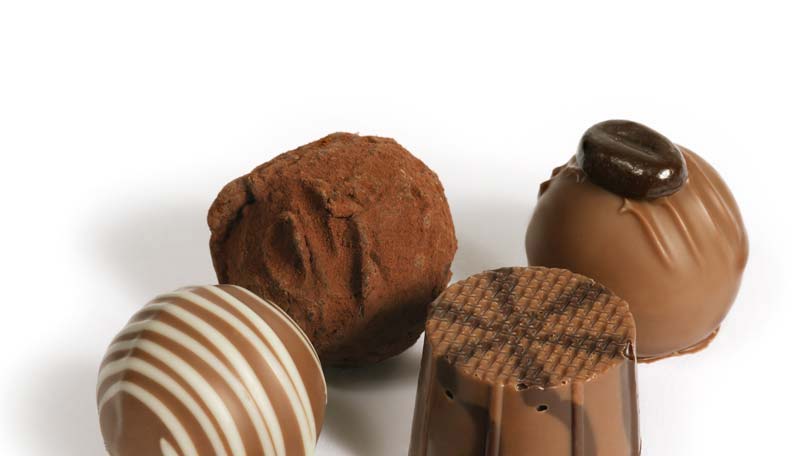
As a stimulant, caffeine has found a place among consumers needing a kick of energy, a wake-up call of sorts during the day. Although coffee is the leading source of caffeine among drinks, caffeine is also found in soft drinks, tea, chocolate, some medications, and even some foods! FDA regulations make listing caffeine in food and drink mandatory, but do not demand the amount (mg per serving) be provided. For the caffeine sensitive, beware; caffeine can be found in many products, and the use of caffeine as an additive to medications and beverages only seems to grow.
Tea, much like coffee, is brewed in such a way that caffeine, flavor, and other substances such as tannins and antioxidants are extracted from plant leaves and seeds. Tea usually contains half the amount of caffeine per cup than coffee, with black and oolong tea containing more caffeine than green or white tea. Tea prepared with very hot water and allowed to steep for a longer period of time will generally have higher caffeine content than tea brewed at a cooler temperature for a shorter period of time.
In general, consumers are aware that tea and soda drinks may contain caffeine, but soda is unique in that it is a favorite among children and young adults. Cola, originally prepared from kola nuts (caffeine is a natural substance of the kola nut), has approximately 10-50 mg of caffeine per serving. Mountain Dew and Diet Coke are among the leaders when it comes to caffeine in soda, with Mountain Dew at 55.5 mg per 12 ounce can, and Diet Coke at 46.5 mg per 12 ounce can. Sprite, 7-up, and Mug Root Beer have no caffeine at all. Because young adults and children are typically smaller than adults, it takes less caffeine for them to feel the stimulating effects, and one can of caffeinated soda has been shown to raise behavioral problems among first-graders by 432%.
For the caffeine consumer that cannot be satisfied by a Mountain Dew, there are now energy drinks on the market such as Red Bull and Rock Star that offer nearly the same amount of caffeine per serving as brewed coffee, but are packed with sugar and other chemicals as well. Some of these energy drinks have naturally occurring caffeine as an additive such as guarana, however, some manufacturers take caffeine that has been leached out of products during decaffeination (such as the making of decaf coffee), and use it as an additive instead. Many parents are concerned that caffeine can be addictive and have adverse health effects like anxiety and sleeplessness, and feel that these products should not be marketed to the young.
Another favorite of children (adults too) is chocolate. Caffeine is actually found in the cacao bean which gives chocolate its flavor; darker chocolate has higher cacao content, and therefore more caffeine than milk or white chocolate. A milk chocolate Hershey bar contains only 10mg of caffeine while a Hershey’s Special Dark bar contains over 30 mg of caffeine. Caffeine can also be found in hot chocolate, baker’s chocolate, and any other food product with a substantial amount of chocolate, especially if that chocolate is dark.
If the choices of dessert were not already narrowed down enough by the elimination of caffeinated dark-chocolate containing items, ice creams and yogurts are two more products that can hold considerable amounts of caffeine. Ben and Jerry’s No Fat Coffee Fudge Frozen Yogurt has 85 mg of caffeine per cup, which is more than one could find in the average can of soda! Haagen Dazs Coffee flavored frozen yogurt and ice cream have very high caffeine content as well. Although many might assume that ice creams and yogurts merely contain coffee flavor, so is not the case; these desserts contain actual coffee products, meaning that they contain caffeine as well.
Fortunately, the caffeine found in chocolate and ice cream desserts will only cause a mild increase in alertness for the majority of consumers. The real danger from caffeine comes from high doses that are found in certain diet pills, which combine stimulants like caffeine and ephedrine to suppress appetite and increase metabolism. Products like Hoodia and Trimspa contain very high levels of stimulants, and while manufacturers tout the caffeine to be ‘naturally occurring’, so is most caffeine, and these products should be used under a doctor’s supervision. Other over-the-counter medications with caffeine are Anacin and Excedrin, usually taken for headache or pain relief. Caffeine is used as an additive in headache medicines because it acts to constrict the dilated blood vessels which cause the headache pain.
For those people trying to avoid caffeine, the best way to do so is read labels, know ‘other’ names for caffeine (like guaranine and mateine), and carefully choose desserts. Though coffee and caffeine are almost synonymous, few people think about caffeine in food and other drinks, and need to be aware of the effect these products may have. In a society stuck in fast-forward, it is no wonder that caffeine is finding a place in more products each year, and rapidly growing in popularity even among younger generations.
